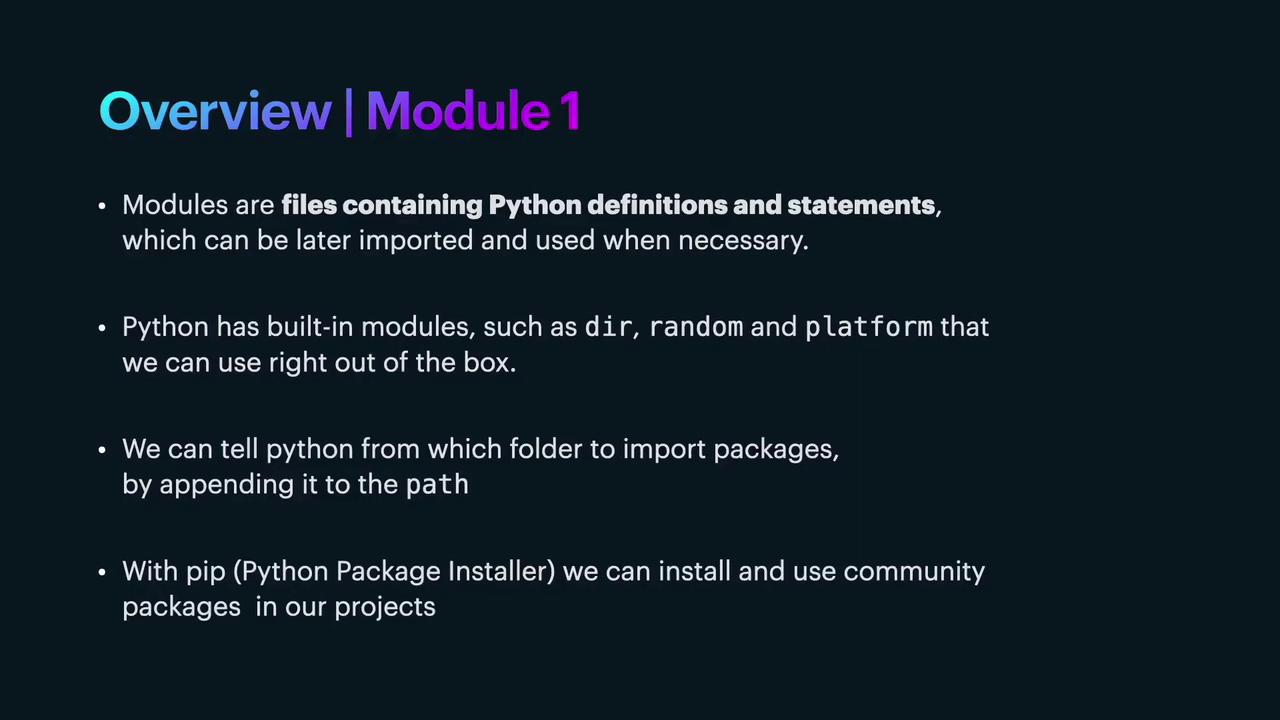PCAP - Python Certification Course
Module Packages and PIP
Overview Module 1
In this lesson, we revisit some of the key topics covered in Module 1, providing a structured review of Python modules, built-in functions, package creation, and package installation.

Python Modules and Imports
We began by discussing Python modules, which are simply files containing Python definitions and statements. These modules can be imported into your code using the import keyword, allowing you to reuse code across multiple scripts.
Note
Built-in modules such as random and platform are available for immediate use without any additional setup. Additionally, functions like dir() help explore the attributes and methods within a module.
Package Creation and Module Execution
The lesson also delved into package creation. It explained how to:
- Organize code in directories that Python recognizes as packages.
- Instruct Python on where to look for these packages.
A key point was understanding how to determine whether a file is being executed as a module or as a standalone script. This is typically achieved by checking the value of the __name__ variable:
if __name__ == "__main__":
# This code block executes only when the module is run as a standalone script.
Installing Community Packages with pip
Finally, the module covered the usage of pip, the Python Package Installer. Pip makes it easy to install community packages, thereby enhancing the functionality of your projects. With pip, you can manage packages and keep your project dependencies up to date.
Note
For more detailed guidance on using pip, you may refer to the official pip documentation.
Watch Video
Watch video content